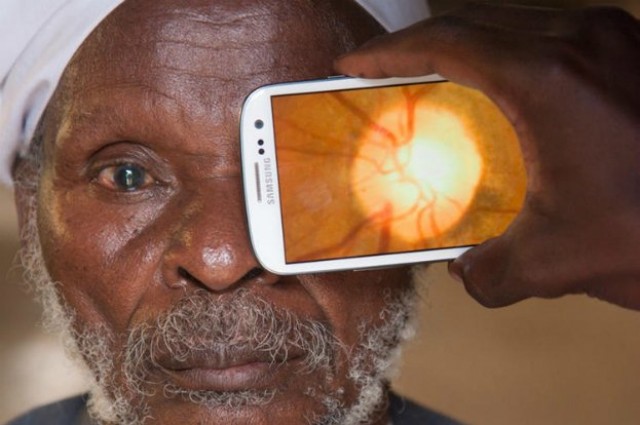
Around 39 million people in the world are blind, with another 256 million suffering from visual impairments. The World Health Organization estimates that about 80% of these cases could be prevented or reversed if these people had adequate access to visual care. Bringing the necessary ophthalmological equipment to poor and remote areas could soon become a lot easier with the development of Peek Retina: the Portable Eye Examination Kit. This device, currently in development by Peek Vision, connects to smartphones and will allow doctors to easily and affordably complete eye exams.
Peek Retina clips onto the camera of smartphones and allow physicians to examine the retina, using the appropriate amount of light intensity pointed at the necessary angle. Because it is combined with a camera, it produces high-quality images that can be referred to later in order to get a second opinion or to track progress if needed.
The device assists in identifying conditions like glaucoma and cataracts, allowing patients to receive treatment to slow or reverse the disease. This can also be used to identify complications of diabetes, malaria, and meningitis which can impact vision and indicate swelling of the brain. Understanding the full scope of a patient’s health can impact how doctors proceed with treatments and therapies.
Over the last two years, physicians have been testing a prototype of the device in remote locations such as Mali, Botswana, and Kenya, with encouraging results. The company predicts that health care workers could perform about 1,000 eye exams per week with this technology. In addition to using Peek Retina in remote locations, the device is also great for use in industrialized areas at prisons or nursing homes, and by non-health professionals at home.
The company is currently undergoing a crowdfunding campaign, seeking to raise £70,000 (US$110,000) to develop the tools needed to manufacture Peek Retina on a larger scale. They hope to begin distribution by October of 2015. Initially, each unit will cost about £60 (US$95), but the price will likely go down over time as more units get manufactured.
Leave a Reply